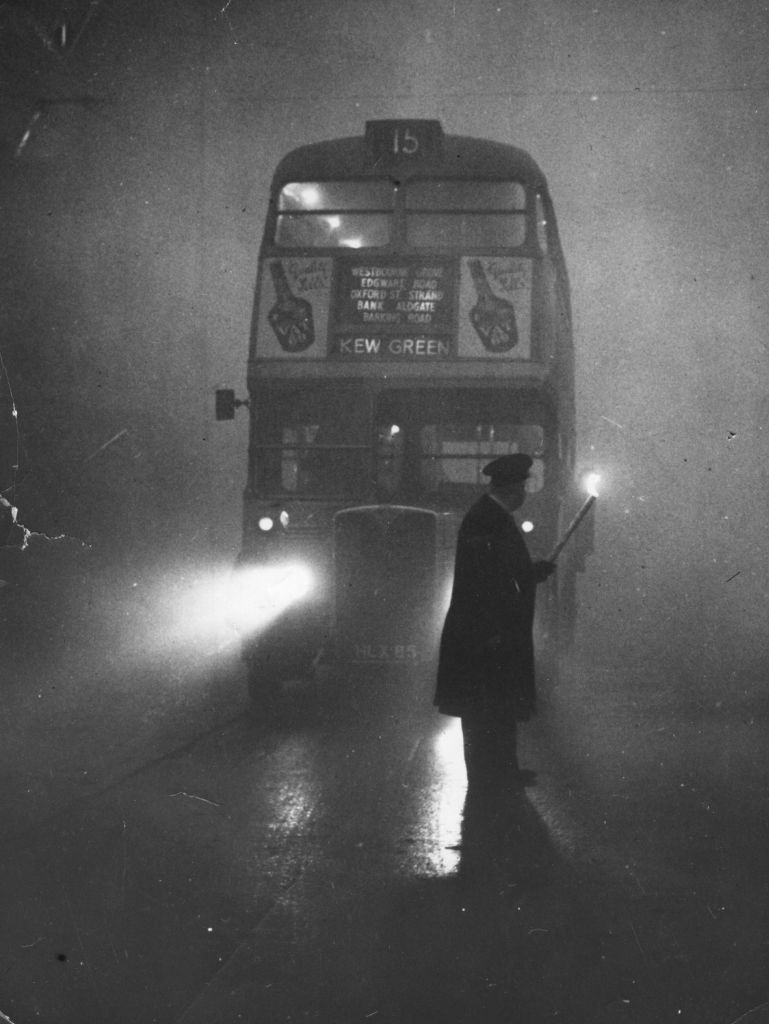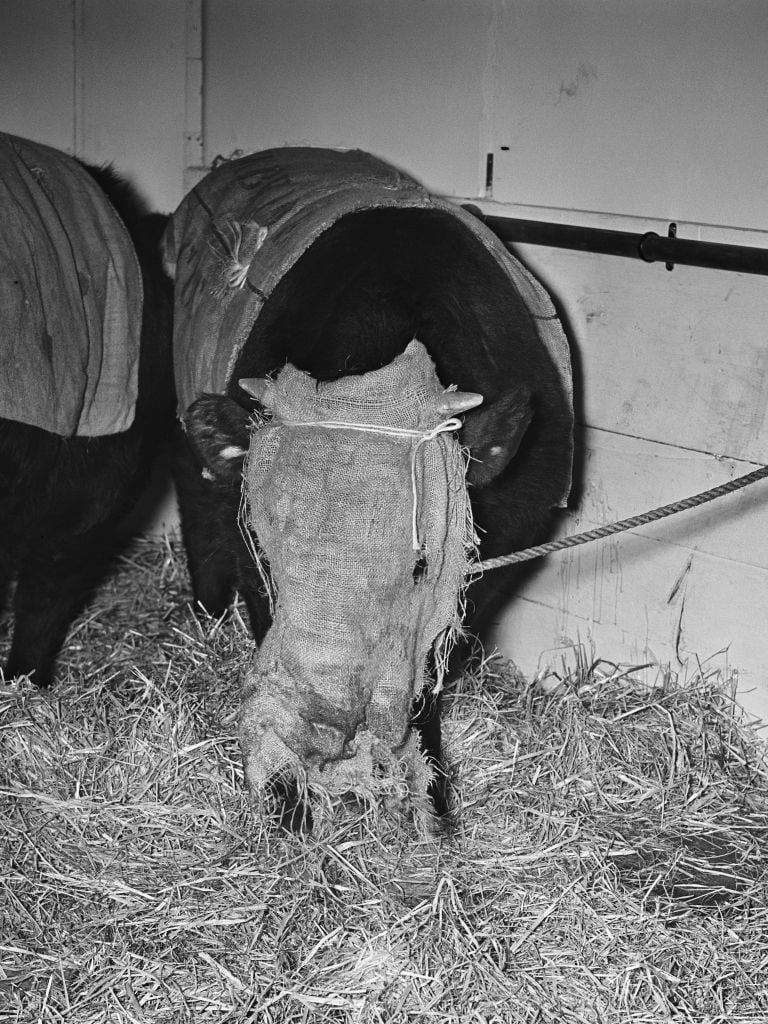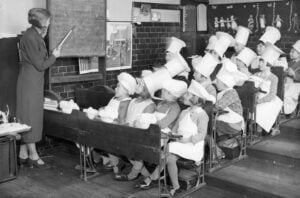Seventy-one years ago today, London was plunged into the ‘Great Smog’. Over the course of the next five days, some 4,000 people would die as a direct result of the air quality, and modern estimates say the death toll could be closer to 12,000.
Photos from the time show just how eerie the famous city became.

“Pea-soupers” were not a new phenomenon for London. The term, used to describe thick, yellowish fogs, dates back to the 1820s, but their presence in the United Kingdom’s capital dates back long before even that. After all, London is regularly known as the Big Smoke, and recordings of all-encompassing fog have existed for as long as London has burned coal, right back to the 13th century.
Read More: The history of Big Ben, Great Tom and the world’s most famous clock
As the industrial revolution boomed in the 19th century, the issue got worse. Water vapour in the air would clasp onto the particulates released by the burning of coal, and this produced dark clouds, with even less visibility than the traditional pea-soupers. The darkness of the city is famously featured in works of art and literature from the time, including those of Charles Dickens. The first page of his 1852 novel Bleak House features the famous passage: ‘Fog everywhere’.

Over 100 years later, in December 1952, the city found itself in a perfect smog storm, now known as the Great Smog.
It began with the high-pressure weather system, trapping cold air underneath the warm air higher up. This meant the city’s emissions could not be released into the atmosphere, and because of the particularly cold temperatures, Londoners burned even more coal than usual. The increased emissions, both from industrial power plants and domestic fires, became a self-sustaining cycle, even as the Great Smog wore on.

Steam locomotives also continued to operate in the heart of the city, and new diesel buses had recently been introduced. These replaced London’s electrical-powered tram service and added to the pollution of the city.
It came to a head on December 5, when visibility was reduced to a matter of feet. In some parts of London, it was reported that pedestrians could not even see their own feet. Driving became nearly impossible, and ambulance services were affected, as well as public transport. For drivers, the visibility was so bad that many just abandoned their cars in the middle of the road.

As the air got thicker, the wind remained light. It was just strong enough, however, to disturb the saturated air and send it upwards, forming a layer of fog as deep as 600 feet (200 metres).
The immediate impact of the Great Smog on public health and the lack of ambulance service left many needing to make their way to hospital on their own. Cases of pneumonia and bronchitis shot up, and press at the time reported four cattle at market asphyxiated due to the conditions.

Dramatic as it sounds, Londoners were said to have not overly panicked. It was only when the registrar published the number of deaths weeks afterwards that the extent of the damage became clear. By then, the excess deaths amounted to approximately 4,000. Recent estimates rank the number of deaths closer to 12,000.
In 1956, the first Clean Air Act was passed as a direct response the smog, and in 1968 a second round of legislation was passed. By the time the 1968 decree was enacted, black smoke was banned and both residents and businesses in urban areas were ordered to convert to smokeless fuels. These measures, wider pollution legislation and modern alternatives, such as central heating instead of burning coal, have all led to transformatively different London today.





